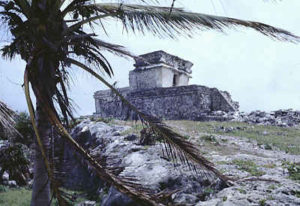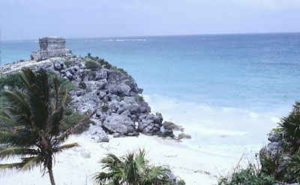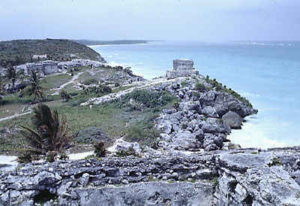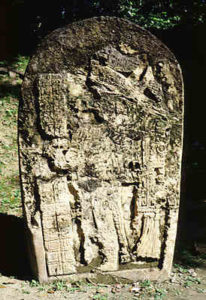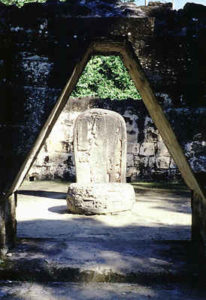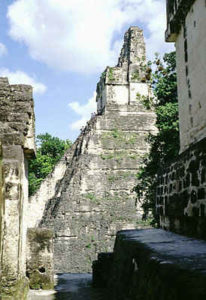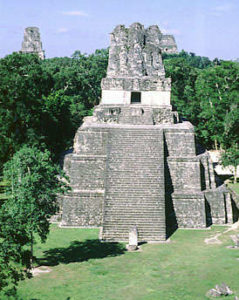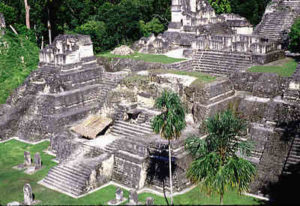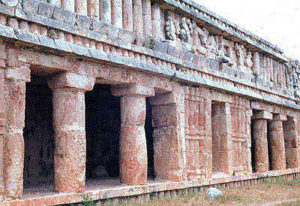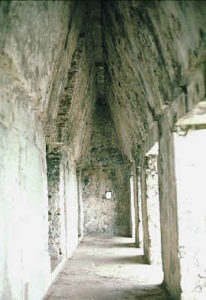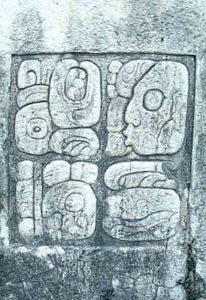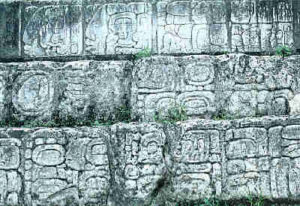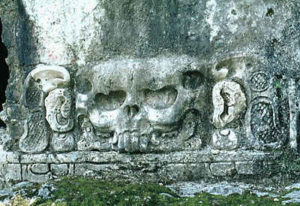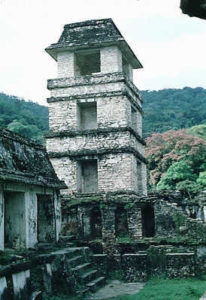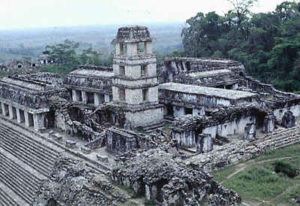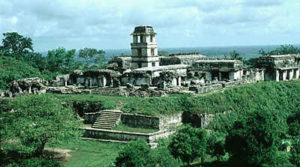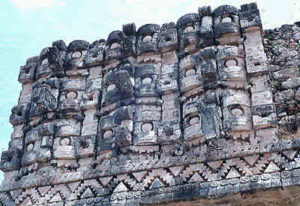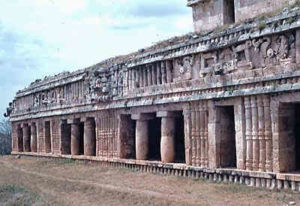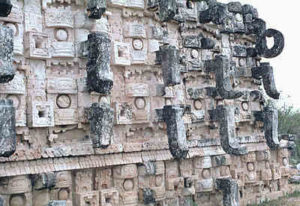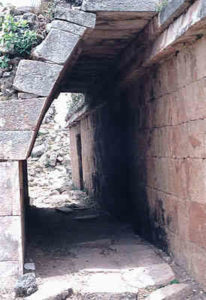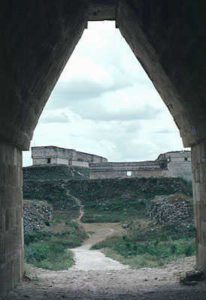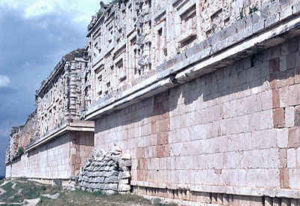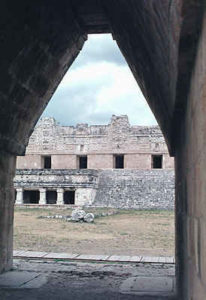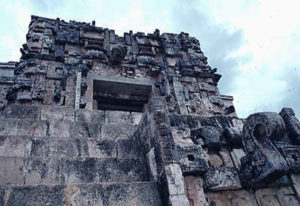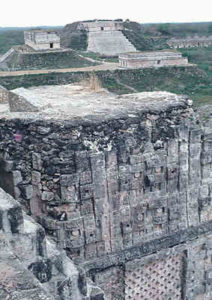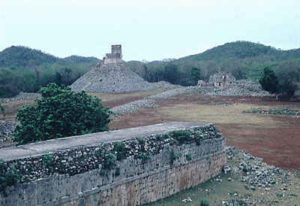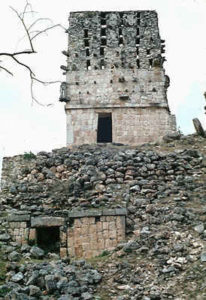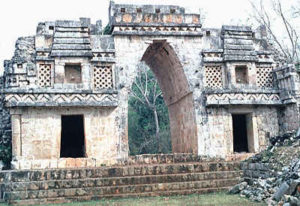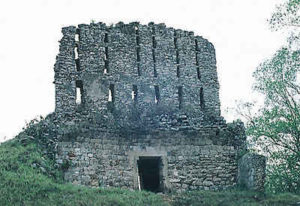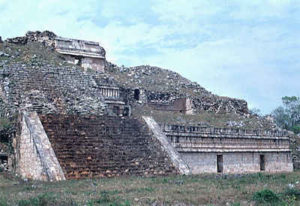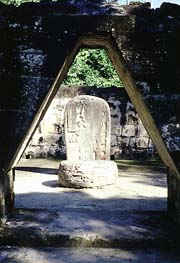The material splendor of the Maya culture is appreciated, more than in any other field, in the architecture and ornamentation of their cities. These city-states were the center of power for the king-priests who administered the obedience, the tribute and the manpower of the people who believed in them.
Many Maya cities and ceremonial centres have been discovered, some of which appear in our map of the Mayan country, from the now Mexican states of Campeche and Yucatán down to Honduras in Central America.
Not all the cities were developed at the same time. At the beginnings of the Maya culture, the highlands raised the first edifices. In the apogee of the Classical Period, between 250 and 900 A.D., the lowlands witnessed the flourishing of great cities such as Tikal, located in the heart of the Guatemalan Petén. After that, the creative impulse moved to the plains and low plateaus of the south end of the Yucatán peninsula, where the Puuc cities saw their moment of glory.
Each Maya city exhibits a unique style, although regions and epochs lent them certain common features. When we visit the ruins of the cities that seem to suddenly appear from the dense jungle, we cannot but admire the engineering workmanship which guaranteed the supply of provisions and water to the inhabitants; the fine stucco decorations; the stone estelas, dumb witnesses to the most advanced calendar system of those days; the ample and complex network of roads that criss-crossed all the land, keeping communications, commerce and interchange open to all Maya centres.
The names of the old cities are forgotten. The ones we use today were made up by explorers and missionaries, travelers and archaeologists. One of the few prehispanic names we keep is that of the City of the Wizards of the Water, Chichén Itzá.
The huge ceremonial esplanade in Tikal contains three big platforms, and over them rest the pyramidal buildings so common in the ancient Maya cities. To the north of the Great Plaza, one of these platforms defines the area. Ten pyramidal basements are built over it, distributed in a symetric manner to the west and east of its central axis. To the center of the plaza, and to the south of it, two more vast platforms perform the same function, to give the complex a unique, majestic atmosphere. Seen from a distance, the buildings seem to surface from the bottom of the green sea of the tropical forest.
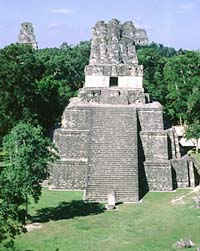
The temples that emerge so gracefully from the jungle, with almost vertical walls, have a molded base and composite corners, to accentuate the impression of height. Over the back walls you may appreciate the typical crests of Tikal. The stairs go up on the front and they do not show any lateral support, something which gives the building an aura of even greater height.
Many of the palaces contain one or two rows of rooms on just one floor, but in Tikal there also two, three and even five storey buildings. The emphasis put in height and verticality gives an imposing touch to the city. It seems that the constructors wanted to come closer to Heaven and to their gods in this way, and in doing it, they raised the tallest buildings in ancient America. One of the temples in Tikal reaches 70 meters in height.
Tikal is a city of many estelas. To this day, more than 80 have been found, a fourth of them carved with bas reliefs representing personalities, figures, glyphs and “long count” dates. It is possible that the non-carved estelas were painted, but the merciless passing of time has erased the commemorative messages that might have been written over them.
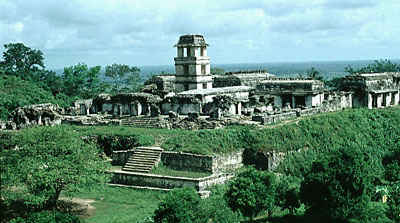
PALENQUE
Palenque is located to the north of the Sierra de Chiapas, over a plateau that extends itself over the plain. With the exception of Comalcalco, it is the most western city of the Maya. The first vestiges in Palenque show that the area was occupied as far back as the 4th century A.D., but it did not reach its zenith until the 7th and the 8th century, when the Maya Classical Period was at its height.
The ceilings of the buildings in Palenque follow the outline of the false vault, or Mayan vault, so their profile reminds us of the straw huts which, then and today, serve many Maya families well. Crests are widely used as ornaments to buildings. To admire in Palenque, above almost everything else, are the very fine decorations in stucco, very characteristic of this city.
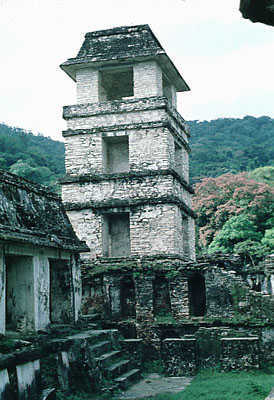
The Palace is built over a gigantic trapezoidal platform, 100 by 75 meters, and to a height that varies to compensate for irregularities in the terrain. Steam baths and water distribution installations have been found in this building, something that leads to the idea that it was used as a dwelling in its time.
The tower of the Palace, which may have served as observatory or watchtower, lends a very distinct profile to Palenque, although it is thought that the original form was not preserved when the building was restored.
Stucco decoration
Decoration in relief, molded in stucco, reached a high degree of perfection in Palenque. Stucco was a very fine paste made of lime with a bit of sand in it, which was in turn applied over stone supports anchored to the walls, ceilings or crests. In many cases, the interior side of the walls were covered with stucco and later painted.
One of the most spectacular examples of stucco sculpture in Palenque is the representation of the god of Death, boasting an admirable, dramatic realism in its features and detail. Another good example of this type of ornamental sculpture is found in one of the rooms of the Palace, where a cross-eyed Mayan priest shows his carefully modeled face from a doorhead.
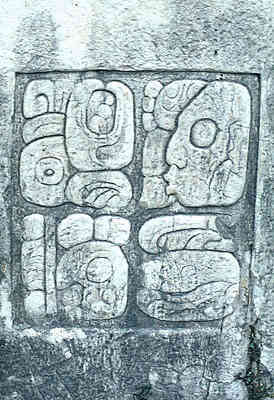
Numerals a\nd Glyphs
Inside the Palace there is a series of stairs, decorated with glyphs and Maya numerals. The unusually large size and the perfection of the workmanship in these reliefs sets them apart from the rest of marvels found inside this superb building.
Construction work in Uxmal began in the 6th century A.D., but the effort went on for more than 600 years. This is the most important Puuc style city in the Mayan country. The name Puuc comes from some very modest elevations found nearby, which the Yucatecans refer to as the “Sierra” Puuc.
The low half of each edifice in Uxmal is plain and unadorned, while the superior half is decorated with elaborate limestone mosaics and carved masks that represent the god Chac, the big nosed god of rain. The buildings in Uxmal are huge, but not very high, something that lends an elegant and sober air to the city. The soft colors of the limestone almost blend with the surroundings.
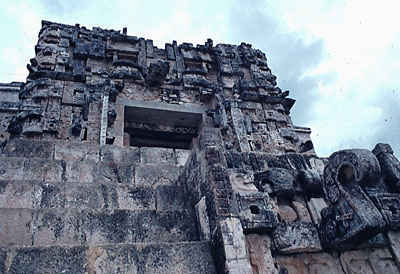
This temple rests upon a massive basement of elliptical shape, with a highly slanted talus. The staircase, protected by rows of masks carved in stone, climbs to the top and to the temple itself, which is soberly decorated.
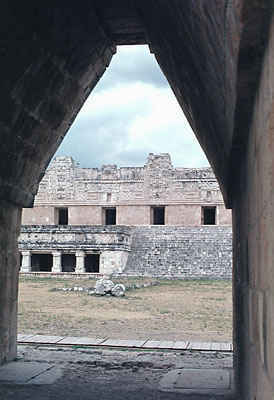
This very beautiful compound of four long palaces is grouped around a patio 80 meters long by 70 meters wide. To get in, you pass below a Mayan arch located halfway to the south side of the complex. The palace which delimits the south side is elevated over a terrace six meters high, accesible by way of an ample staircase.
The facades on the buildings that conform the quadrangle are adorned with elaborate representations of Mayan huts, rectangles and Chac masks, with superimposed ornaments such as carved loops, lattices, small columns, human shapes, birds and monkeys.
The Palace is built over a staircased platform divided in three sections. The walls are crowned by a cornice shaped as a knot, with a serpent that shows its heads on each corner. Five Chac masks preside over it, superimposed on the corners of each section.
The decoration includes representations of sea shells, laces and knots, masks, two headed serpents and tufts of feathers carved in limestone.
Towards the end of the terrace outside the Palace of the Governor lies the House of the Turtles. It shows a regular layout, a simple facade, and a frieze with small columns surrounded by ornaments shaped as lacings and series of stone turtles anchored from roof to roof at the top.
Inside the Puuc zone, Kabah is one of the Mayan cities most easily accessed, since it is located to the side of the Pyramid Highway that runs from Campeche to Mérida. It is connected to Uxmal, which acted as capital city for Kabah, by 18 kilometers of “sacbé”, or Mayan white road. It reached its apogee between the years 800 and 900 A.D., although its history is much more ample than that brief period.
The Maya Vault
The Maya invented their own vault, made of superimposed flat stones, called Maya vault or false vault. In Kabah there are several places where the Maya vault and arch may be appreciated. It is very interesting to see how the ancient engineers managed to solve the problem of sustaining their roofs, doors and windows.
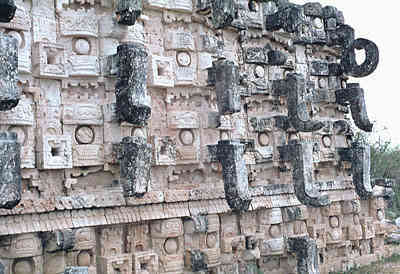
Chac, the huge nosed god for rain and weather, appears in Kabah as the principal decorative motif. We have to remember the great importance that the Maya assigned to the weather, the seasons and the rain. The growing of maize, which was almost considered as a god, is what made them different from the nomad peoples, hunters-gatherers with no means for a sedentary life. Chac was (and still is) a deity much appreciated by the Maya for of that reason. Along with Chac, the architects of Kabah used carved lacings, small columns and false capitals to adorn the walls of their city.
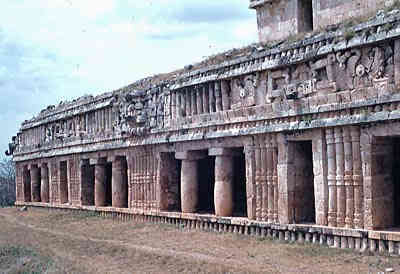
SAYIL and LABNÁ
Not far from Kabah, Sayil and Labná complete, along with Uxmal, the picture of which is the Maya Architecture known as Puuc style. This zone was developed at the beginning of the 8th century A.D., when the lowland cities of the Maya were in decadence or already abandoned.
Just in the middle of the dense Guatemalan tropical forest, in the department of El Petén, the greatest of all the ancient Maya cities thrived: Sayil. Her constructive development spans more than 1,200 years, from the 3rd century B.C. to the 9th century A.D. A definite characteristic of its architecture is the height of its temples and palaces -sometimes counting several storeys- crowned by ornamented crests. Finely carved lintels and doorheads are also found in Sayil.
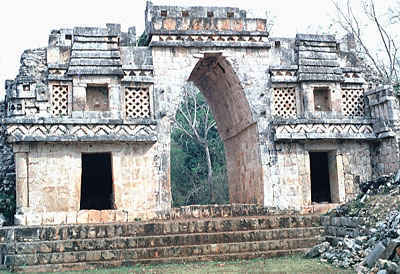
What gives deserved fame to Labná is its great Mayan arch, which connects two adjacent quadrangles. It is the first thing the fortunate traveler sees when he or she arrives in the city.
Towards the end of the ceremonial esplanade, the Edifice of the Columns permits access, to this day, to the water stored in the chultún below. A chultún is an underground reservoir of water, commonly built in the Yucatán to store rainwater. The Maya families who live nearby climb every day to the roof of the building to gain access to the round mouth that opens to the water below. In this way they get the water they need for personal use, daily bath included.
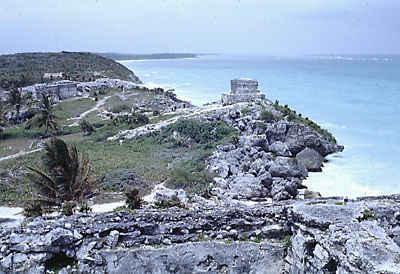
Tulum reached its highest splendor in the 1200 A.D., and it was still thriving when the Spanish arrived. They were amazed by the beauty, size and strength of the city. It must has been an important point in the network of commercial ports and havens that the Maya maintained over all of the southeast coast of the Yucatán peninsula. These maritime shelters, along with the sacbés, or white roads, were the heart of the communications and transportation system used by the Yucatán Maya in their time.
Temples and administrative buildings are located inside the fortress. Among these are: The Castle, The Watchtower, The Temple of the Frescoes, and the Temple of the Descending god.

